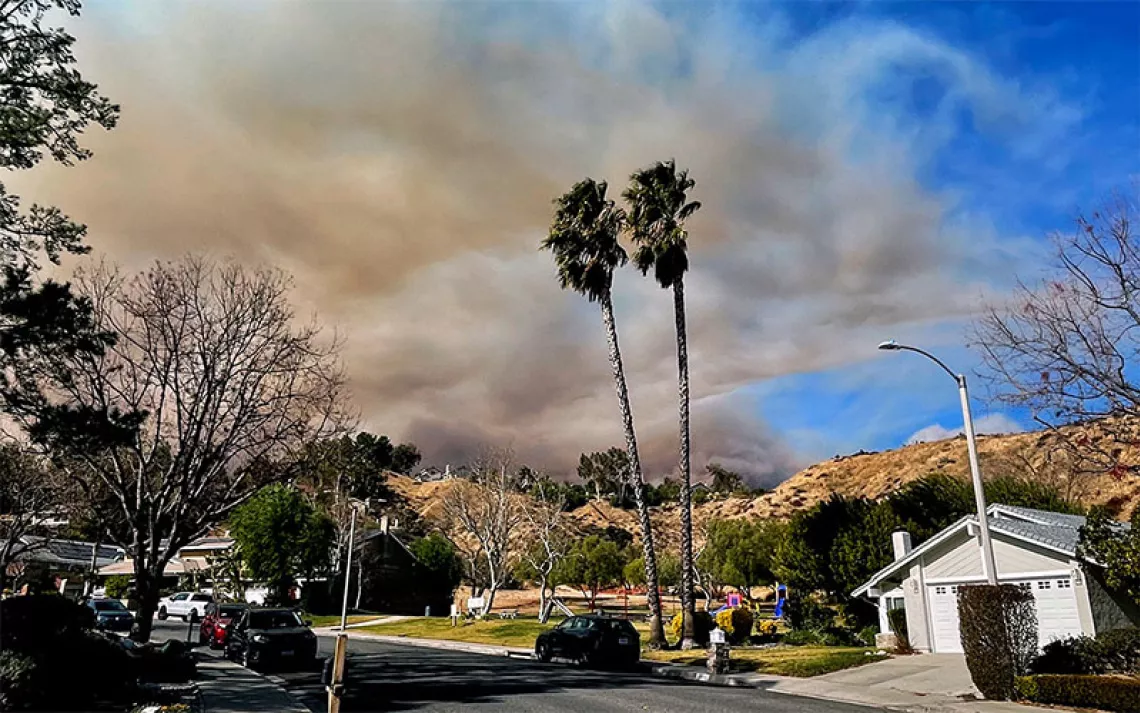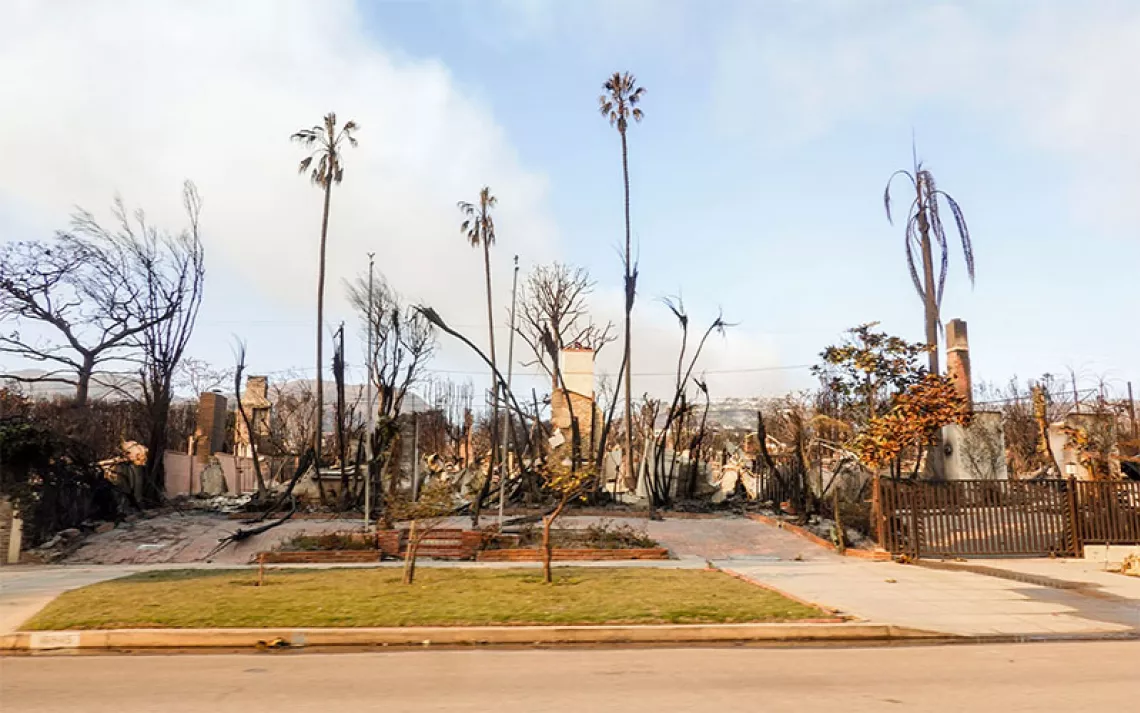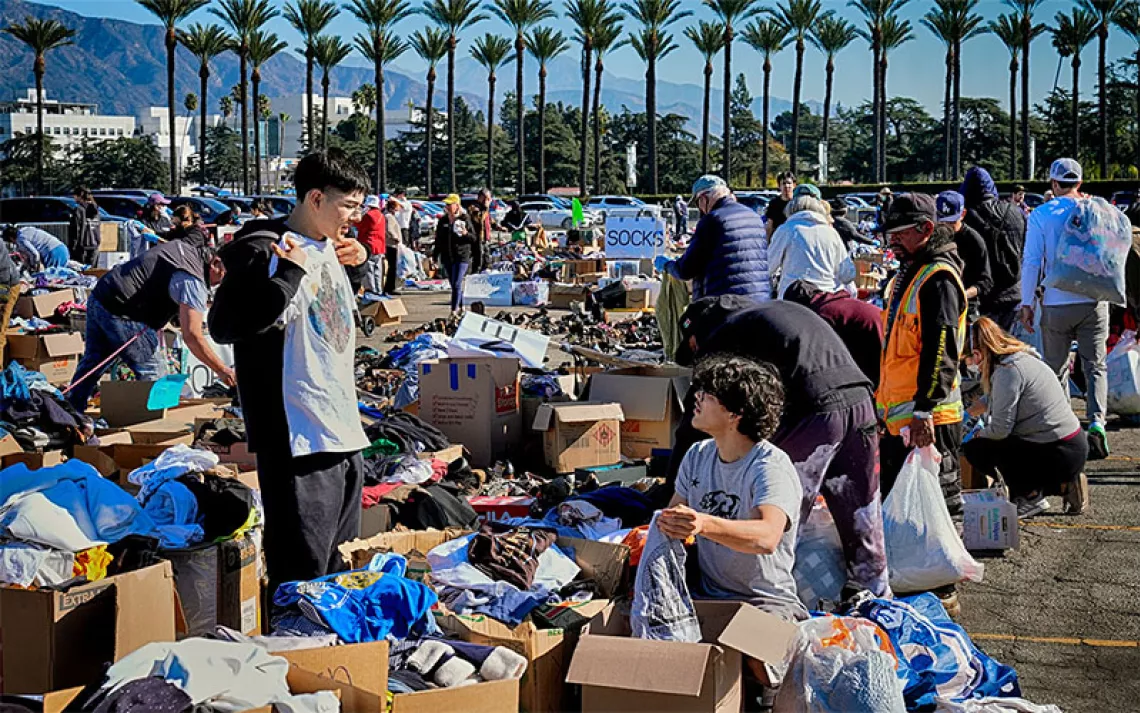Climate Change Makes Its Mark on Reefs
Major bleaching events are happening

Photo courtesy of the ARC Centre of Excellence for Coral Reef Studies
For years, researchers believed the northern third of the Great Barrier Reef paralleling the coast of Queensland, Australia, was a spatial refuge—an area that would be more or less immune to rising ocean temperatures and could safeguard delicate coral habitats and the species that rely on them. But in 2016, El Niño conditions precipitated a spike in water temperatures, causing up to 93 percent of corals to bleach and killing about 25 percent of the corals in the far north and around 65 percent of corals in the north outright. Then, in 2017, another major bleaching event impacted corals a little farther south. There are already indications that another bleaching event may be underway.
The alarming pattern of bleaching is one reason Terry Hughes of the ARC Centre of Excellence for Coral Reef Studies wanted to get a handle on just how common bleaching events are. In a paper in the journal Science, Hughes and his colleagues analyzed existing data from 100 coral reefs around the world and added new measurements from the latest bleaching events, plotting the rate for bleaching over the last 40 years. In the early 1980s, a reef could expect a major bleaching event every 25 to 30 years. Since 2010, however, that has dropped to once every 5.9 years. What’s more, of the 100 reefs analyzed, 94 have experienced a significant bleaching event some time over the last four decades. Because El Niño events and sea temperatures have gotten warmer, the bleaching is more severe. “The six remaining have bleached more moderately up to four times since 1980,” Hughes says. “It’s a matter of time as global warming continues until they all bleach.”
Bleaching doesn’t necessarily kill coral, though it does turn it an eerie bone white. A type of photosynthetic algae called zooanthellae lives in the tissues, producing nutrients and carbon that the coral uses for energy. The symbiotic algae also give corals their stunning colors. When coral undergoes stress from pollution, loss of light, or increasing water temperatures, the zooanthellae are ejected, causing the coral to lose its color and food supply. If things go back to normal relatively quickly, the algae can often recolonize the coral and the system survives. If the bleaching lasts too long, the coral dies. It can take 10 to 15 years for the coral to regrow.
While some localized bleaching does happen, regional bleaching events are something new. “The phenomenon of mass bleaching at the scale of thousands of kilometers was first described in 1982 and 1983 when there was a strong El Niño,” says Hughes. “But there have been thousands of El Niños throughout history. We can look back through time for a couple centuries, and coral growth bands, which work like tree rings, don’t exhibit stress bands before that time.”
The closing gap between major bleaching events means corals don’t have time to recover between incidents. The Great Barrier Reef, for instance, experienced its first mass-bleaching event in 1998 and again in 2002. A 14-year break until the next major event gave the coral a chance to partially recover. But new data suggests that was a fluke and the coral will be lucky to get such a long reprieve in the future.
The future for coral seems pretty grim, but it is just one symptom of our ailing tropical oceans. Other major problems like plastic pollution, overfishing, and runoff are taking their toll. In another recent paper in PLOS One, Iliana Chollett, a post-doc at the Smithsonian Marine Conservation Program, looked at 25 years of data collected by the Caribbean Coastal Marine Productivity program. In 1992, researchers across the Caribbean began setting up sensors in 48 pristine habitats like mangroves, seagrass beds, and coral reefs in 18 nations. Chollett looked at the dataset to get a sense of how the Caribbean is faring.
While the sensors did not pick up significant increases in water temperature, 42 percent of the sites saw decreased visibility and drops in water quality caused by human activity. “Those sites were selected for being pristine, for being outside big towns and away from human influences,” says Chollett. “Those signs of degradation are worrying. It means decreased health of the marine environment and the ecosystem can’t provide the services it used to.”
Chollett hopes the study will work as a wake-up call for the nations and islands experiencing the decrease in water quality and spur them to reduce agricultural runoff and pollution affecting the sea. “People don’t go to the Caribbean to contemplate murky water,” Chollett said. “It could decrease property values and reduce tourism.”
Hughes says that he hopes his study and recent news about the Great Barrier Reef will also spur people to take action. “We’ve reached a fork in the road, and by highlighting bleaching and the possibility of recovery we hope to motivate people to support global climate goals.”
So far, human activity has increased global temperatures by 1 degree Celsius. Because they are already warm, the tropical waters that major reefs call home are not heating up quite as fast as cooler parts of the oceans, giving them a little extra time. “The 1 degree increase has been stressful, but if we can constrain future warming another half degree I think we’ll still have functional reefs, even if the mix in species changes—3 or 4 or 5 degrees of warming will certainly cook coral reefs, and that’s what we can expect if we go along with business as usual,” Hughes says.
 The Magazine of The Sierra Club
The Magazine of The Sierra Club



